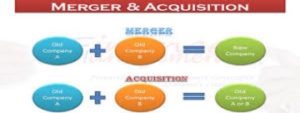How effective is the IQ Merger Arbitrage ETF (MNA) from New York Life Investments? How much do you know about its rival product the ProShares Merger Arbitrage ETF (MRGR)? Have you ever seen an independent critical IQ merger arbitrage ETF review from the point of view of a trader? You may be aware of these products, but read Merger Arbitrage Limited’s Merger Arbitrage ETF Review to find out more.
Is merger arbitrage, an actively managed strategy, an accessible and viable pre-packaged investment option for a private individual? A merger arbitrage strategy may not sound like a traditional candidate for an ETF product. So it may come as a surprise to some that there are options available. We undertake an extensive IQ Merger Arbitrage ETF Review and compare itto the Proshares merger arbitrage ETF. We consider such factors as management style, fees, liquidity issues and performance & portfolio interaction.
IQ Merger Arbitrage ETF Review
Merger arbitrage was once the bastion of event driven professional traders everywhere. The strategy consistently generated superior returns with lower risk. This allowed event driven hedge funds to charge a management and performance fee for the superior management of your investment funds. But times, and the markets have evolved. Nowadays, one simply opens an Interactive Brokers account and fills their portfolios with buy and hold ETFs. So we ask, on behalf of our dear followers, could there be any pitfalls awaiting this seemingly simple solution?
Today’s article focusses on the IQ merger arbitrage ETF review. We discuss the pros and cons of investing in merger arbitrage ETF’s and how they can enhance portfolio performance. For those looking for a solid introduction as to how ETF’s work, we have a book list recommendation. How to Invest with Exchange-Traded Funds (ETFs): A practical guide for the modern investor is a comprehensive text.
If you find this information useful please share this page. Toolbar links are on the left of the screen or at the bottom for mobile users. You can also leave any thoughts and comments or any requests you may have down below in the comments section.
IQ Merger Arbitrage ETF (MNA) & ProShares Merger ETF (MRGR)
Before we start the analysis, let’s get some background information[1]. The following table is the “complete” list of merger arbitrage ETF’s from ETF.com. We have added some additional information drawn from Yahoo finance.
| Ticker | MNA | MRGR |
|---|---|---|
| Name | IQ Merger Arbitrage ETF | ProShares Merger |
| Inception | 17-Nov-09 | 11-Dec-12 |
| Price | $31.74 | $36.27 |
| Avg Vol | 70,812 | 3,531 |
| Div Yield | 0.00% | 1.49% |
| Assets ($m) | 610.00 | 7.30 |
| Mgt Fees | 0.78% | 0.75% |
Two. That’s it. MNA, administered by New York Life Investments which tracks the IQ Merger Arbitrage Index and MRGR, administered by ProShares which tracks the S&P Merger Arbitrage Index. Of immediate note, and quite surprisingly, is neither of these products are appear particularly popular with investors despite having existed for a number of years. In fact, MNA has been in existence for almost 9 years and MRGR for almost 6. Only MRGR currently pays a dividend although somewhat sporadically, but MNA has made dividend payments in the past. The nature of this strategy and the high turnover of stocks makes forecasting these payments incredibly difficult.
The yield data used in the table is the 12-month trailing dividend payments, thus only applying to MRGR. MNA has the second highest assets under management (AUM) for “Alternative” ETF’s but a low overall AUM ranking amongst all asset classes and strategies. MRGR has an almost non-existent AUM potentially exposing it to “existence” risk. Investors choosing to shun this investment, fearful of a product withdrawal due to lack of interest may simply be accelerating its eventual demise.
Merger Arbitrage ETF Review -Trading Data
We also see volume is effectively non-existent for both products. Trading volumes have declined across the board in recent years and that certainly would not have helped. This lack of volume may cause irregular closing prices making historical data analysis troublesome and potentially misleading. A lack of volume is generally associated with a large bid-ask spread. This increases trading commissions, especially if done so on a frequent basis. Although this is a one time “expense” for buy and hold investors. It should not therefore have as large a negative effect over an extended period. One can use a limit order, but there is a lack of liquidity. This suggests the investor may be waiting for some time to trade, if indeed the order is ever filled.
Management fees of around 0.40% – 0.45% are below average for similar hedge fund replication ETF’s but above the industry wide average. This may be an indication of the proposed “added value” reflecting the active portfolio management style of this strategy. If this is this case we expect to see a higher risk adjusted return for these products.
ETF Fund Strategy
Both MNA and MRGR are sufficiently diversified currently holding 47 and 30 positions respectively (including cash). These positions cover a range of both cash only & stock deals and are both heavily concentrated in the US. This implies the trader will at least need to hedge some currency risk. MRGR initiates a position of 3% of AUM in each new deal up to a maximum of 40 positions with a commensurate position in the acquirer stock when required. It is at this point the funds differ considerably. The video above highlights how the popular media fails to explain this.
Both ETF’s seek to achieve capital appreciation by investing in targets of publicly announced takeovers. Nevertheless, here is the big difference. MNA does NOT hedge the value of the deal spread by shorting the acquirer stock in a stock-for-stock deal. MNA claims to have a differentiated approach by shorting market wide products in order to hedge some market risk but this is not sufficient to capture and “lock-in” the profitability and current level of the spread. We do NOT consider this true merger arbitrage (we offer our own comprehensive definition here). We CANNOT therefore substantiate the opening factsheet statement “with the goal of generating returns that are representative of global merger arbitrage activity”.
Benchmarking Issues
It is impossible to compare the performance of this ETF with a true merger arbitrage fund. As seen from the recent Barrick Gold (ABX) merger with Rangold (GOLD) the price of the acquirer has risen dramatically. This is in part due to the markets positive reaction to the proposed cost savings from deal synergies. But also, the volatility currently experienced in the broader market forcing some investors to seek “safer” assets such as gold.
Obviously, a rise in the price of gold (commodity) is great news for ABX, providing a stock price boost. However, the MNA ETF would NOT be shorting this acquirer stock. This is not consistent with a traditional merger arbitrage strategy. During this time however, GOLD (stock) will be appreciating in line with ABX. The result is an unexpected increase in the value of the MNA ETF. This is not due to a superior or diversified merger arbitrage strategy but an unintentional and indirect exposure to a long gold (the commodity) position.
Performance
With the above paragraph in mind, the performance data of the ETF’s is as follows. Over five years, with continuous dividend reinvestment an investment of $100 in MRGR would have produced a total profit of $0.35. Just 35 cents. The same investment in MNA produces a return of exactly $22 or 22%. This annualizes at 4.06%. This compares with a broader market return of 74.18% from the SPY ETF or 11.73%pa.
Even after accounting for the lack of reliable daily data for MRGR this is a stunning under performance, which again highlights averse nature investors have to investing in this product. It is not clear why this is the case. The risk for the merger arbitrage ETF’s, as measured by standard deviation of daily returns for the 5 year period are similar and are approximately one half of that of the SPY. It is perhaps unsurprising to hear the beta and correlation for MRGR against the SPY are 0.03 and 0.06 due to a substantial lack of trading activity. The figures for MNA are 0.19 and 0.42 respectively.
Diversification Benefits
So, does that make MNA a viable candidate for inclusion in a diversified portfolio? Intuition would suggest probably not as there is insufficient return for too much risk. There is also a certain degree of overlap as takeover targets in the SPY essentially function the same as they do in MNA without a corresponding short sale in the acquirer. However, in the last five years there has not been any significant market drawdown in the wider market and as such the broader “hedge” as implemented by MNA has not had a chance to demonstrate is effectiveness. Nonetheless, we ran the figures and the mean variance efficient portfolio consisting of SPY and MNA suggests a weighting of 100% SPY. We cannot find any evidence of this MNA adding any value to an already diversified long equity portfolio under its current portfolio management style.
Summary
In this IQ Merger Arbitrage ETF review we have demonstrated the difficulties in gaining exposure to this strategy using ETFs. MRGR doesn’t trade sufficient volume although the portfolio management policy is consistent with an efficiently run merger arbitrage fund. MNA executes an alternative to the traditional strategy and encounters additional idiosyncratic risk via the acquirer in a stock deal. This can lead to unexpected P&L swings especially as the markets enter a heightened state of volatility.
Our advice is to thoroughly research any products in which you are considering an investment and pay a great deal of attention to how they will affect your portfolio in terms of return AND risk. We do however recommend portfolio diversification with additional weighting given to reliable “alternative” strategies with a solid and credible narrative so long as this is consistent with your investment objective.
[1] Information correct as at time of publication
Finding this information useful? Here's what you can do to help...
- Share this page using the toolbar links at the left of your screen or at the bottom for mobile users on your preferred social network
- Sina Weibo
- Twitter etc.
- Follow us on twitter @MergeArbLimited.
- Become friends with us on Facebook
- Register for news alerts and merger arbitrage deal analysis postings via email using the sign up form.
- In addition to these, an RSS feed is also available at the bottom right of the page.
- Contact us using the details given on the Contact Us page.
- Donate using the paypal widget in the sidebar. It’s gladly appreciated and we need the coffee! See the Paypal section for additional incentives
- Share this page using the toolbar links at the left of your screen or at the bottom for mobile users on your preferred social network
Thanks for reading!







